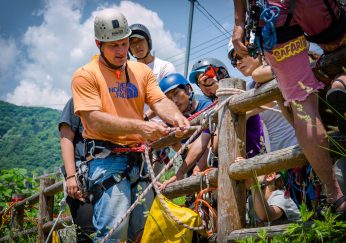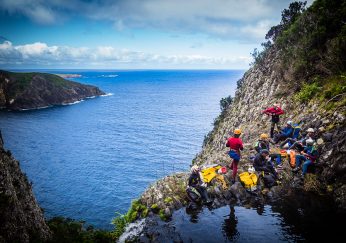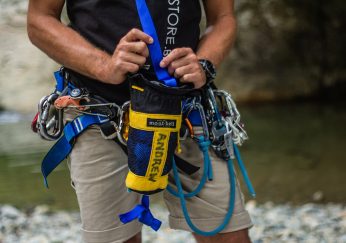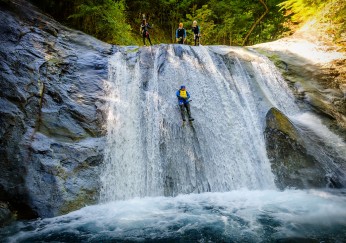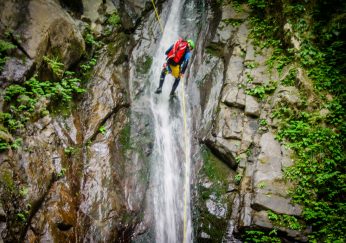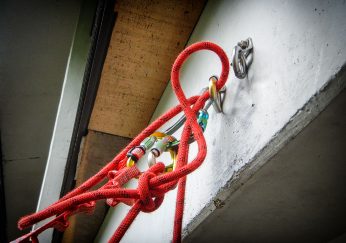Full Disclaimer: Using a knife near ropes and anchors with a live load is extremely dangerous. Proper training in rope cutting is absolutely necessary. DO NOT TRY these techniques unless you have had training. It is paramount you practice and fully understand the steps and potential pitfalls of the techniques below before attempting them with a life on a line.
Indirect Rope Cutting is perhaps the first rescue technique every canyoneer should learn. It’s one of those techniques we hopefully never use, because we anticipated a stuck abseiler/rappeler when we started rigging. Nonetheless, shit happens and cutting your rope to lower is likely the fastest option, if not your only option.
The subject of this article is to turn the idea of Indirect Rope Cutting on its head. Namely, what if you cut your anchor rather than your rope? I know it sounds crazy, but it’s a legitimate option, and maybe a good one! For example, imagine your day 3 into the 8-day Malishan canyon, and suddenly you’re faced with rescuing your stuck teammate with the Indirect Rope Cutting technique. With 5 days of canyoning left, do you really want to cut your rope?
While I doubt we’d have time to think about the rope we need in the future when our teammate is currently drowning in a waterfall, exploring the options of Indirect Anchor Cutting is nonetheless interesting. Before we delve into the possibilities, like any technique, there are some ground rules:
- The anchor must be cuttable (sorry chain anchors)
- We must have enough spare rope to lower to the bottom of the pitch, and this rope must have a large knot at the end of it in case we misjudge.
- We must be able to easily and quickly create an anchor that replaces the anchor we’re cutting (Deadmans are probably out of the question).
- Our new anchor must allow for us to remove any slack from the system, so as not to shock-load the anchor when we cut the old one.
- We must ensure we (and others) are safely clipped to something other than the anchor we are about to cut.
- We must double check… no, triple check! our system before cutting the old one.
Scenario #1
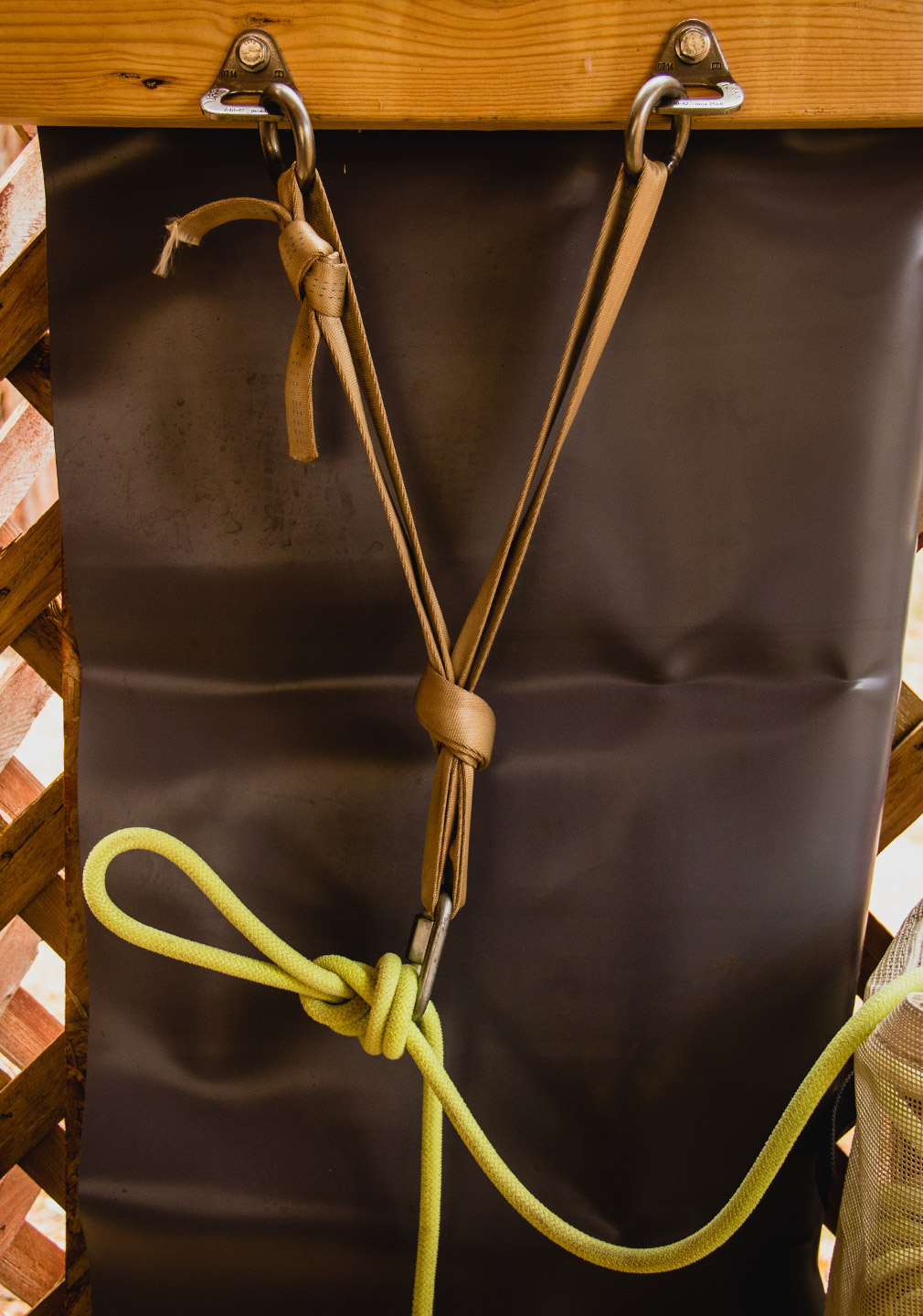
Here we are presented with a two-bolt anchor, linked by webbing, tied with a master point, and a quicklink for our rope. The rope set-up is a standard knot block.
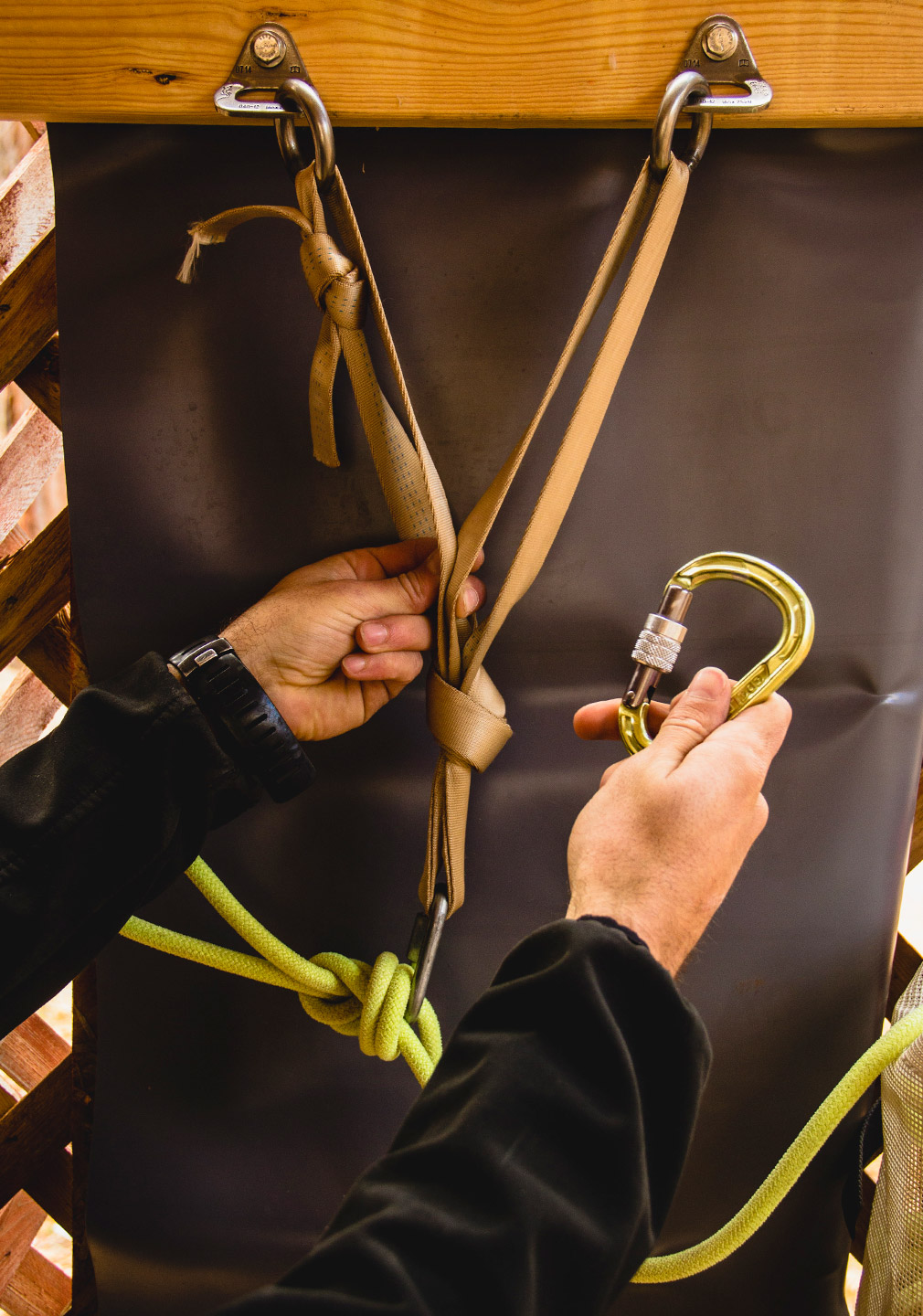
1We clip the shelf of the master point with a small HMS carabiner, making certain we clipped inside both of the two loops.
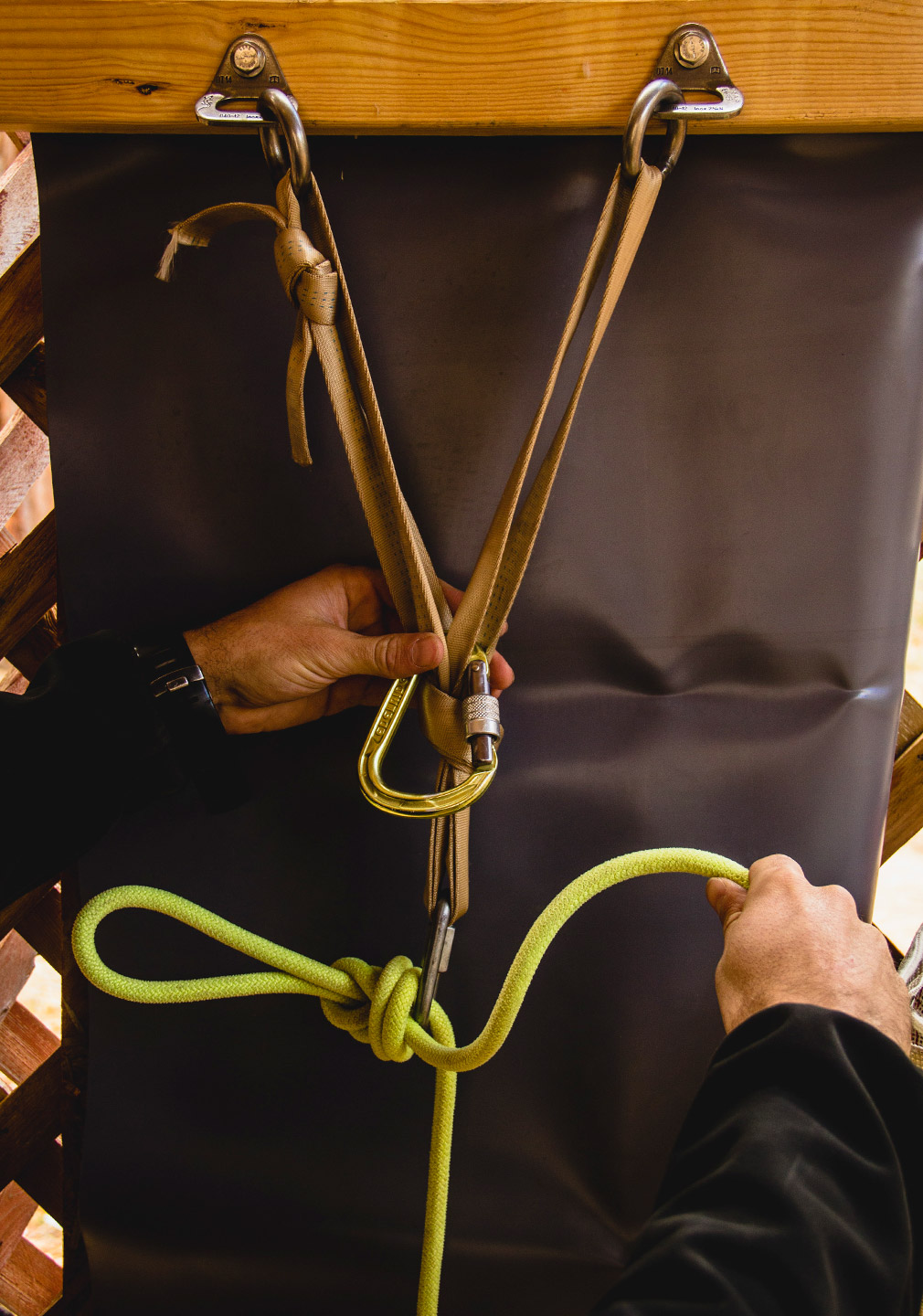
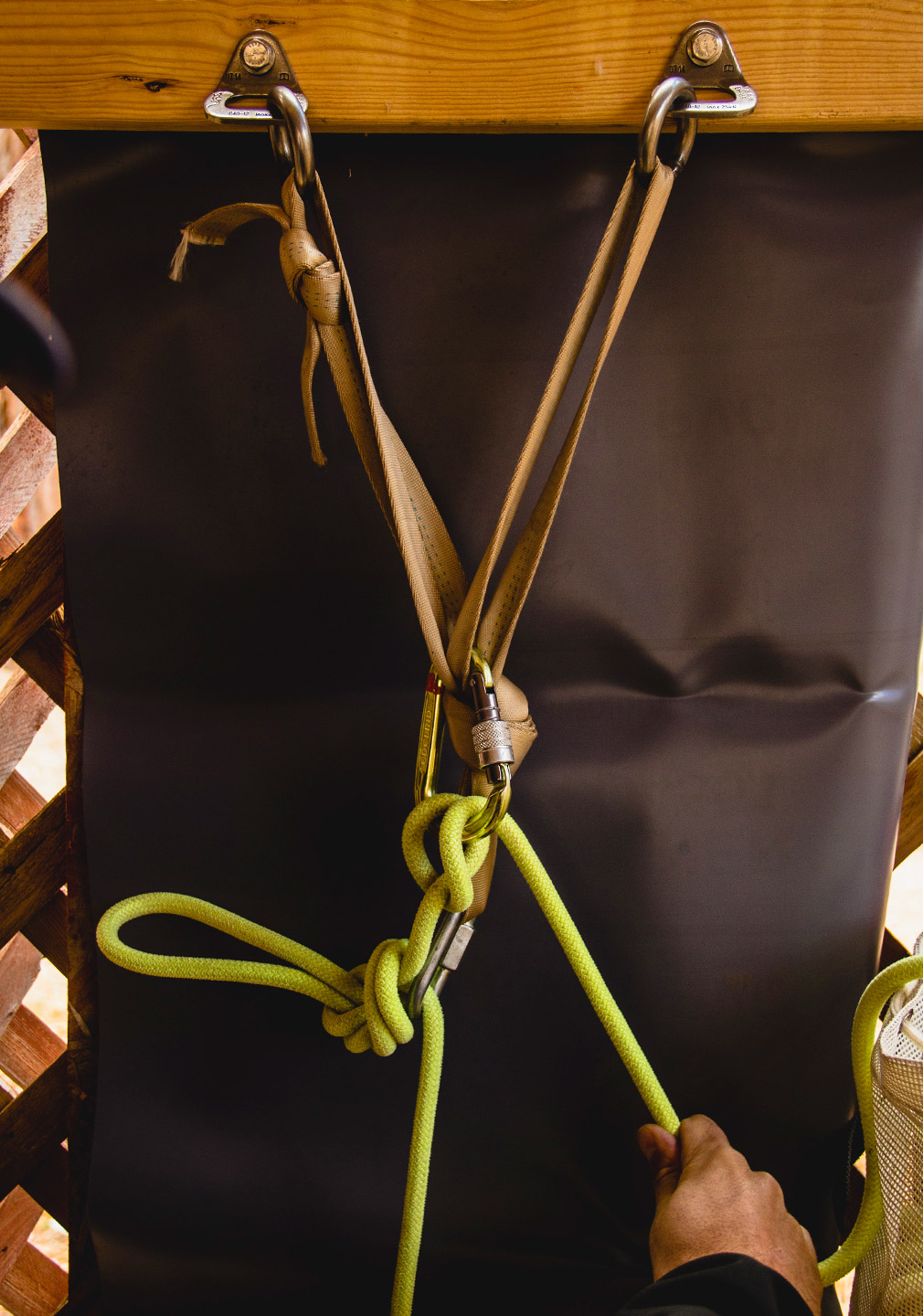
2We take bag-side of the rope, and we tie a munter hitch in the HMS, ensuring we remove all possible slack.
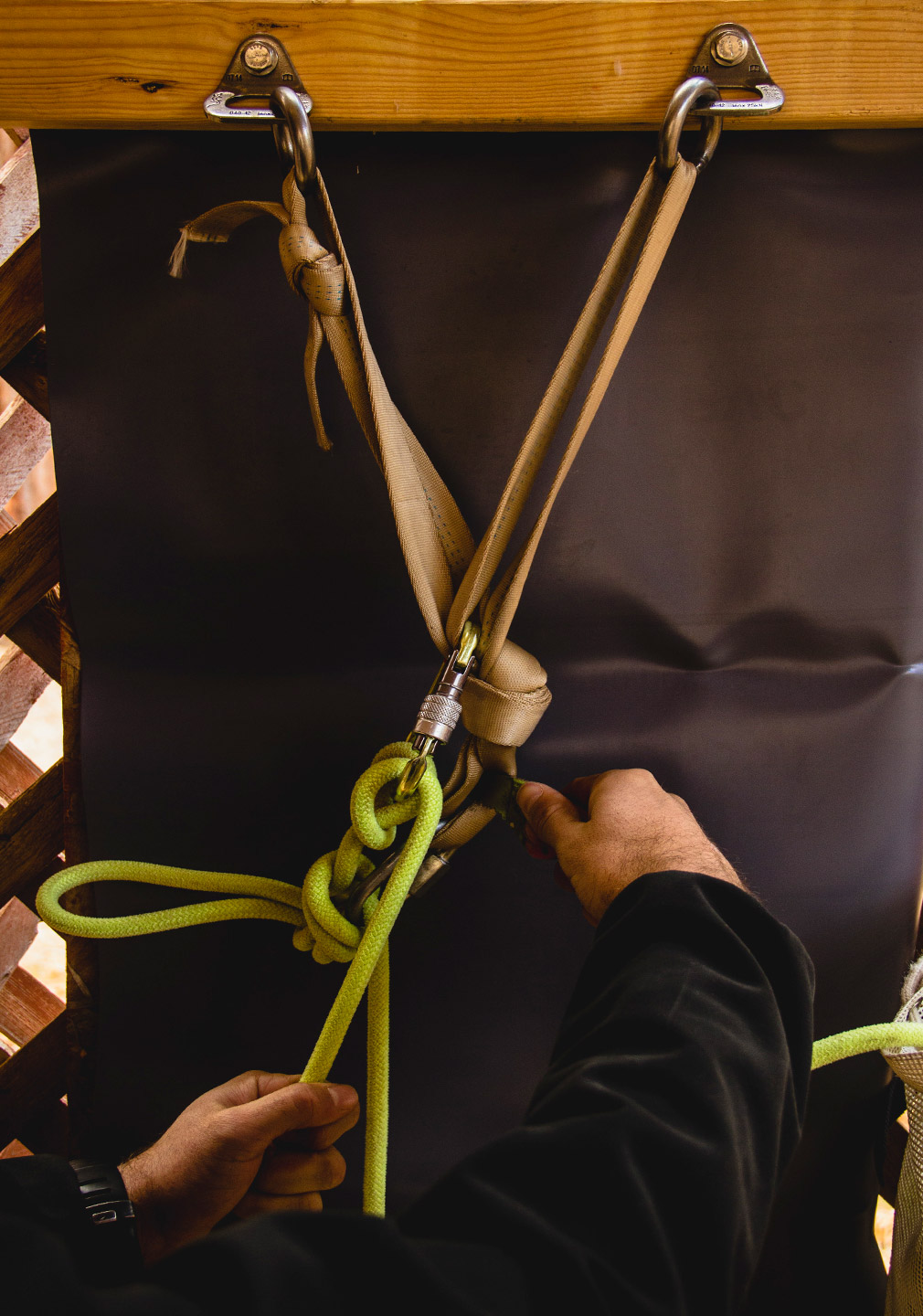
3Holding firmly the brake strand of the Munter hitch downwards (this is uber important!), we carefully cut the loop of webbing holding the quick link.
TIP: If you can clip the loop of the knot block into the quicklink prior to cutting, it will prevent the quicklink from sliding down the rope toward your teammate.
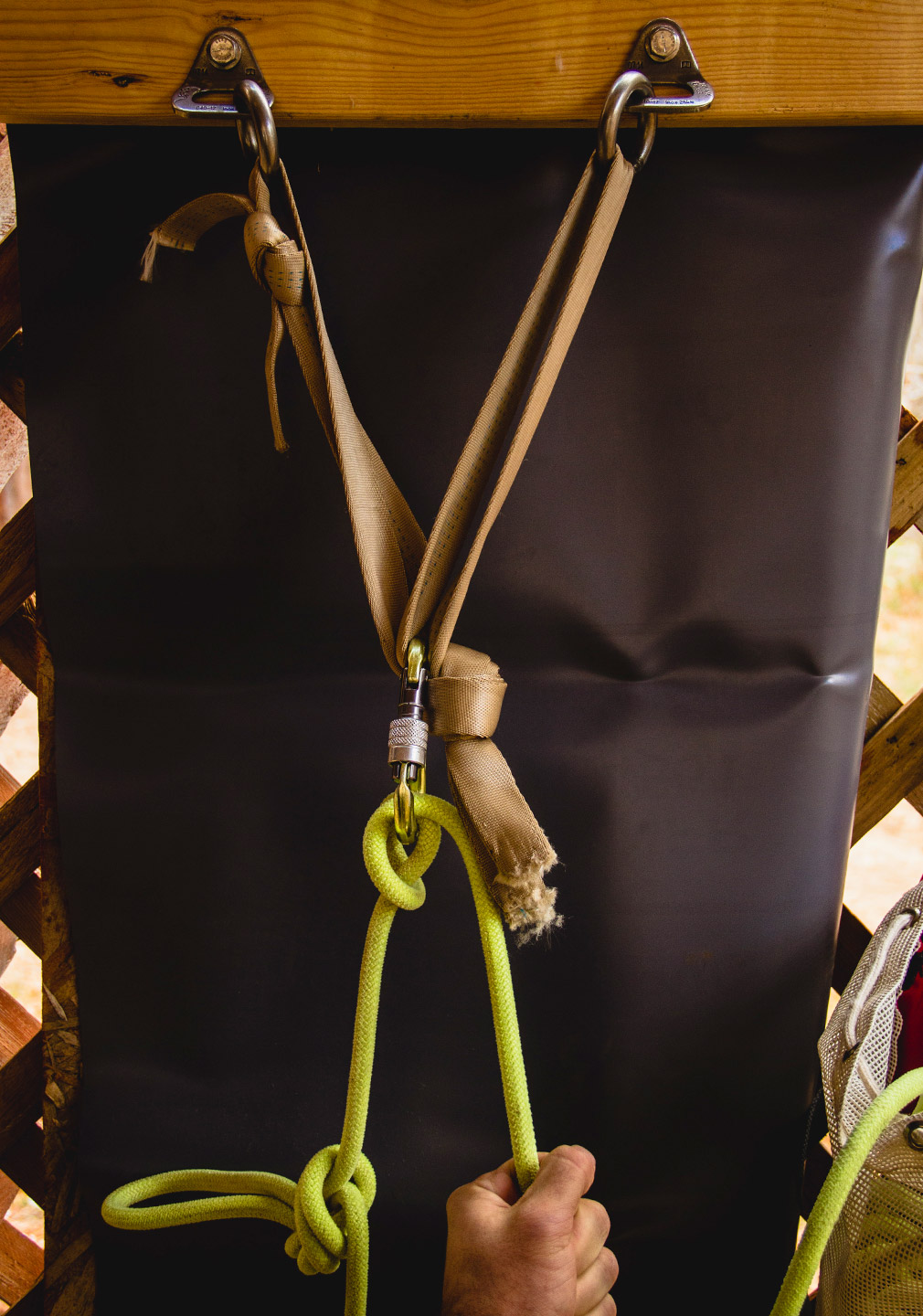
4We carefully put away our knife, and we begin lowering our teammate using the Munter hitch.
Scenario #2
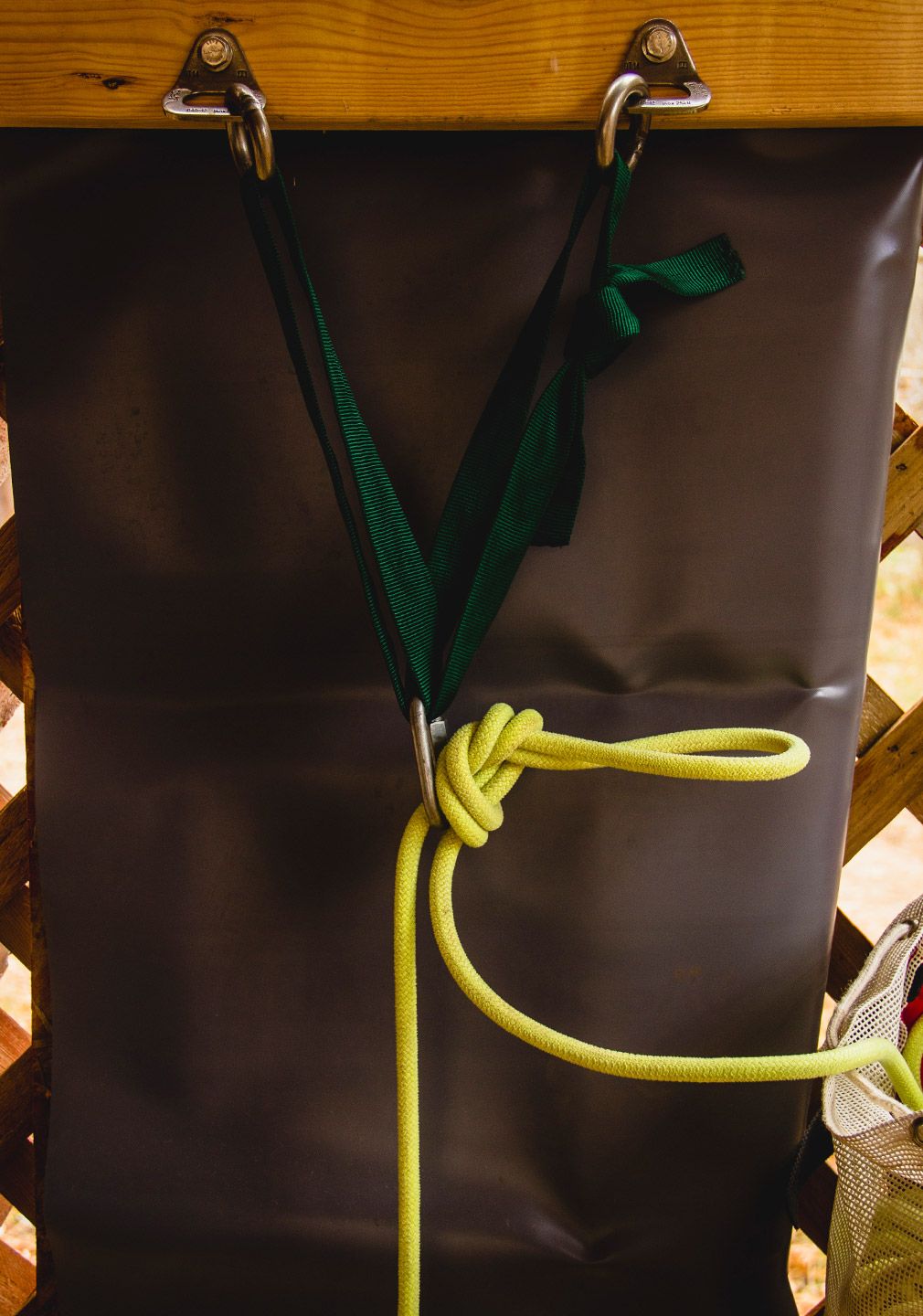
This time we have two bolt anchor, linked by webbing with a quicklink clipped to form a “Sliding X”. This differs from our previous scenario in that we no longer have a shelf to clip into. Again, we have a knot block set up.
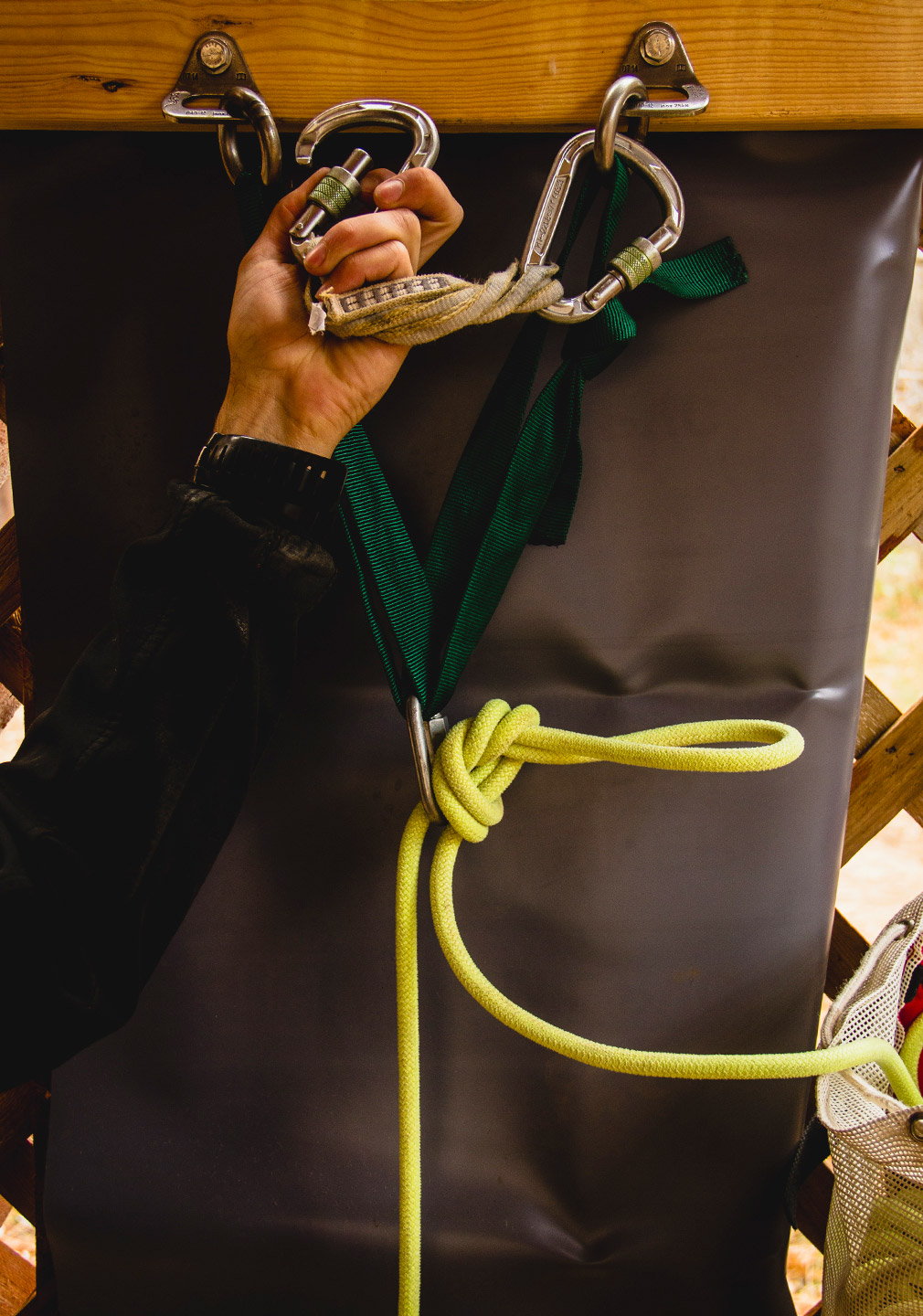
1Clip both bolts with a canyon quickdraw. It is important to have locking HMS carabiners on your quickdraw.
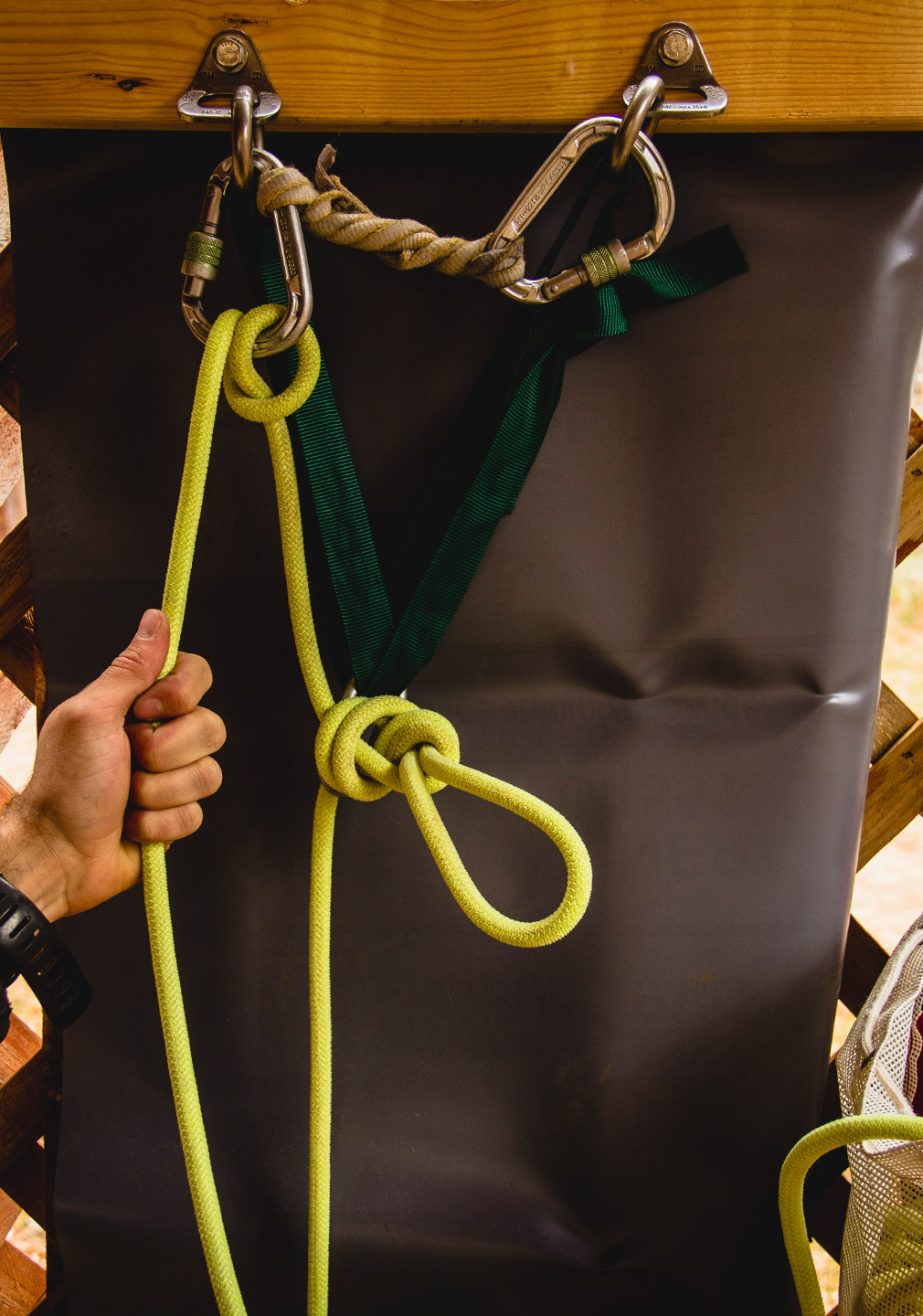
2With the bag side of the rope, we tie a munter on one of the HMS carabiners, and we remove as much slack as possible between the munter and the knot block.
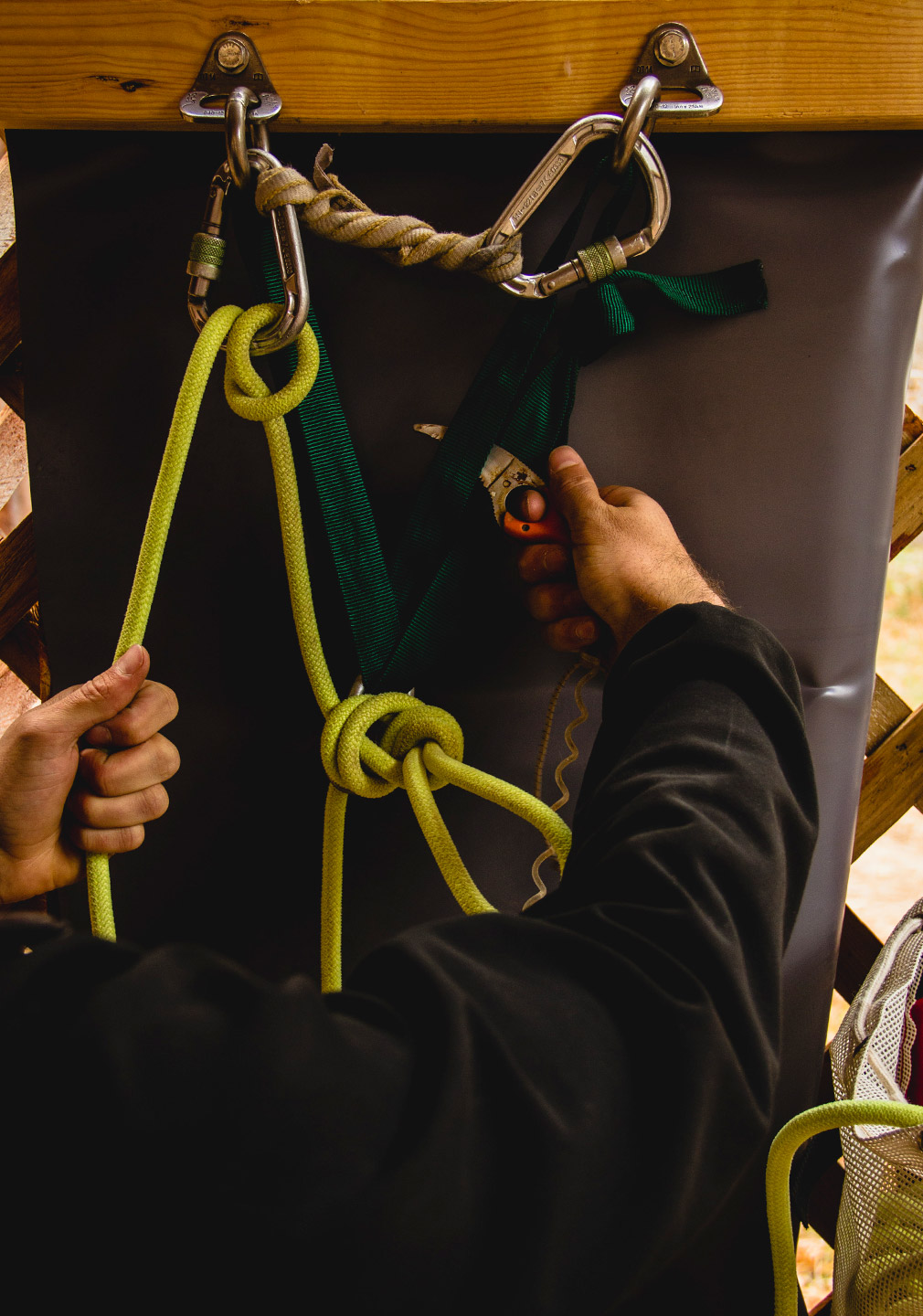
3[OPTIONAL] Lock off the munter with a mule-overhand. This adds security and allows you to use both hands when using your knife. This step wasn’t possible in scenario #1 due to space issues.
4Firmly holding the brake strand of the munter with one hand, use your other hand to retrieve your knife and cut the sliding X. Be careful with what you cut with your knife!
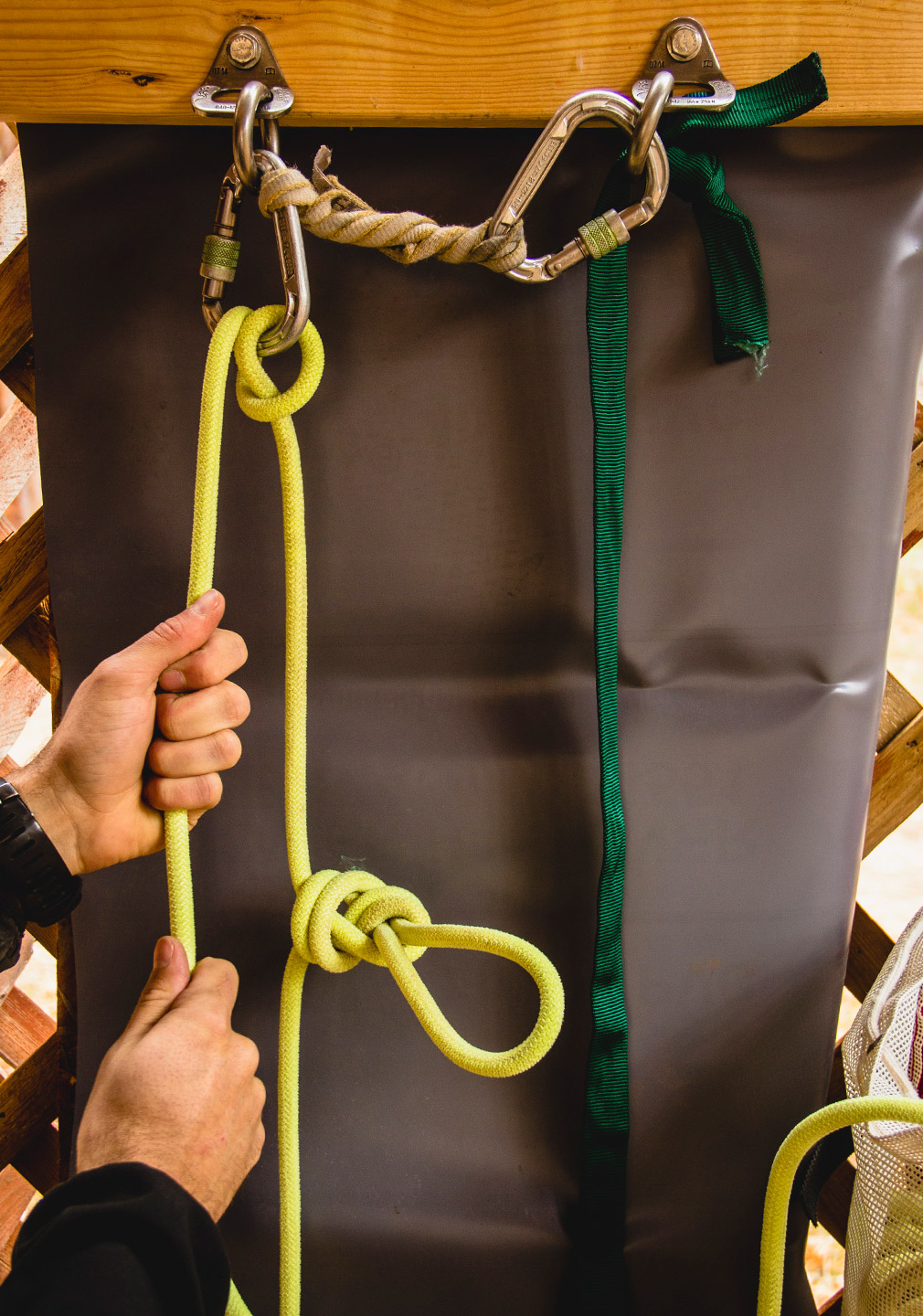
5Carefully put away your knife and begin lowering your teammate on the munter.
Scenario #3
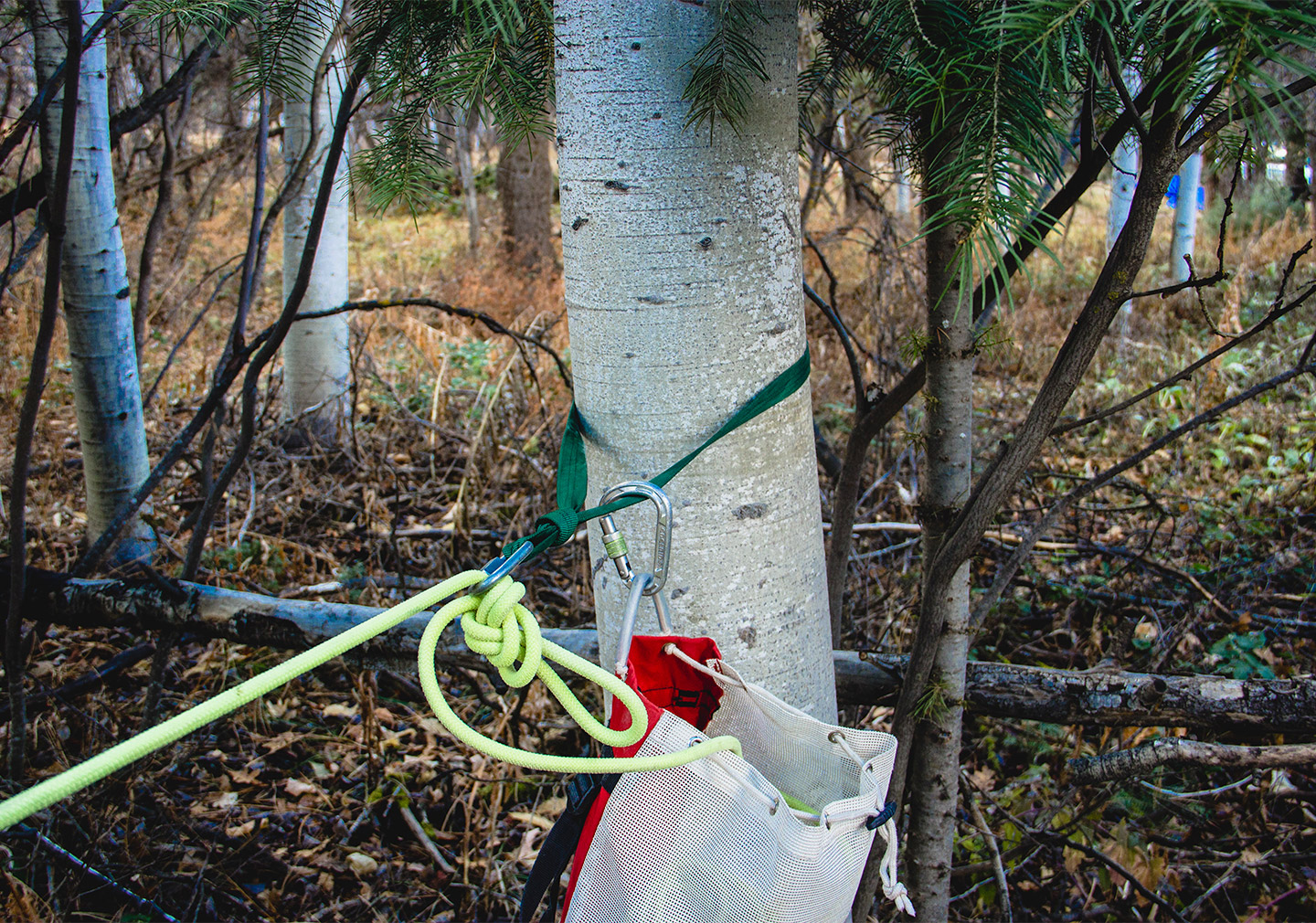
In this scenario, we have a natural, bombproof tree anchor. It is important to note this anchor could also be boulder or some other easily slingable anchor. The tree has been slung simply with a tied loop of webbing, a master point has been tied, and finished with a quicklink. Again, we have a standard knot block.
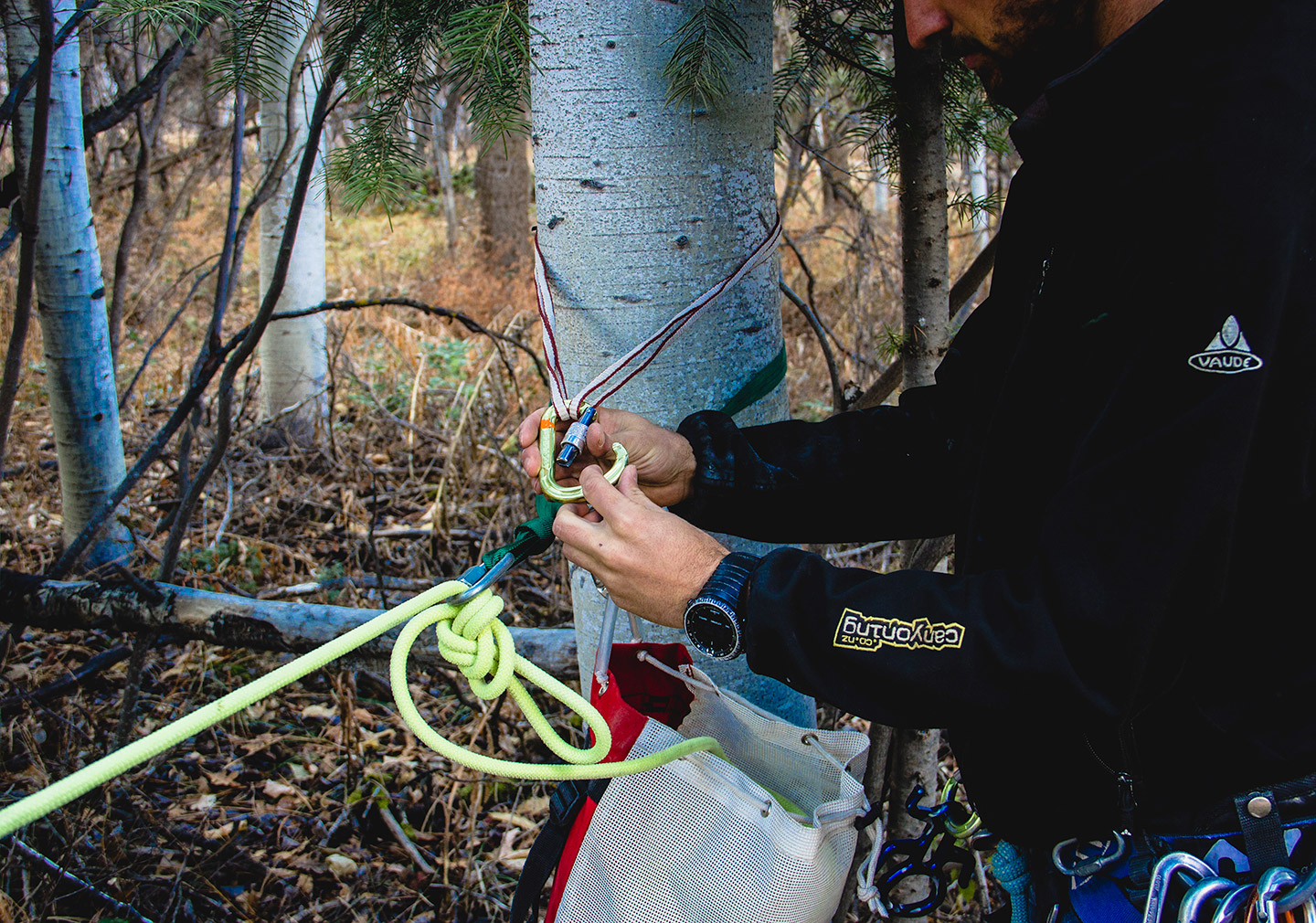
1We re-sling the tree with another piece of webbing/sling/cord etc, and we attach an HMS carabiner. We must ensure this HMS carabiner is closer to the tree than the quicklink, so as to remove slack, but being cautious of dangerous vector angles.
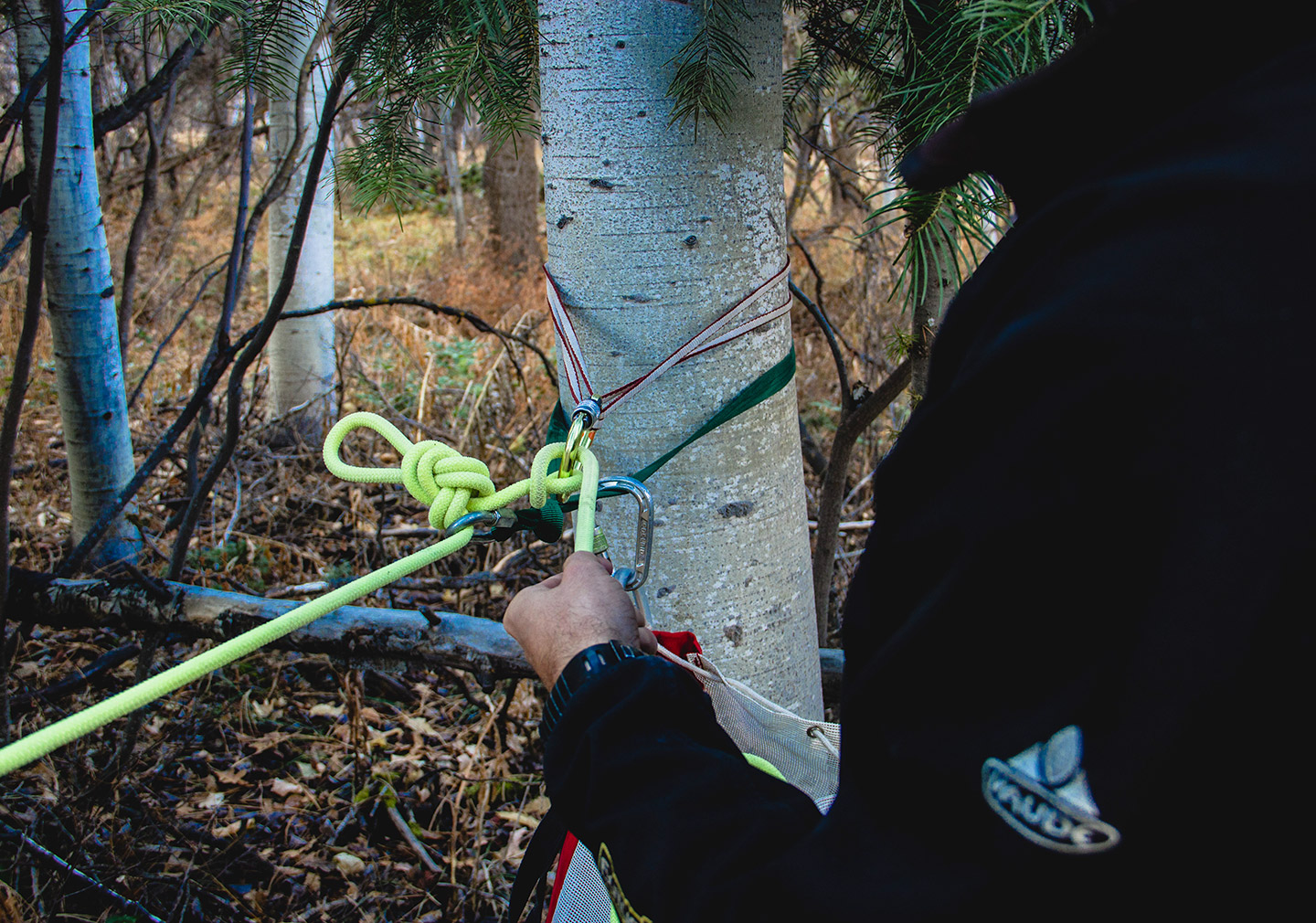
2We take bag-side of the rope, and we tie a munter hitch in the HMS, ensuring we remove all possible slack.
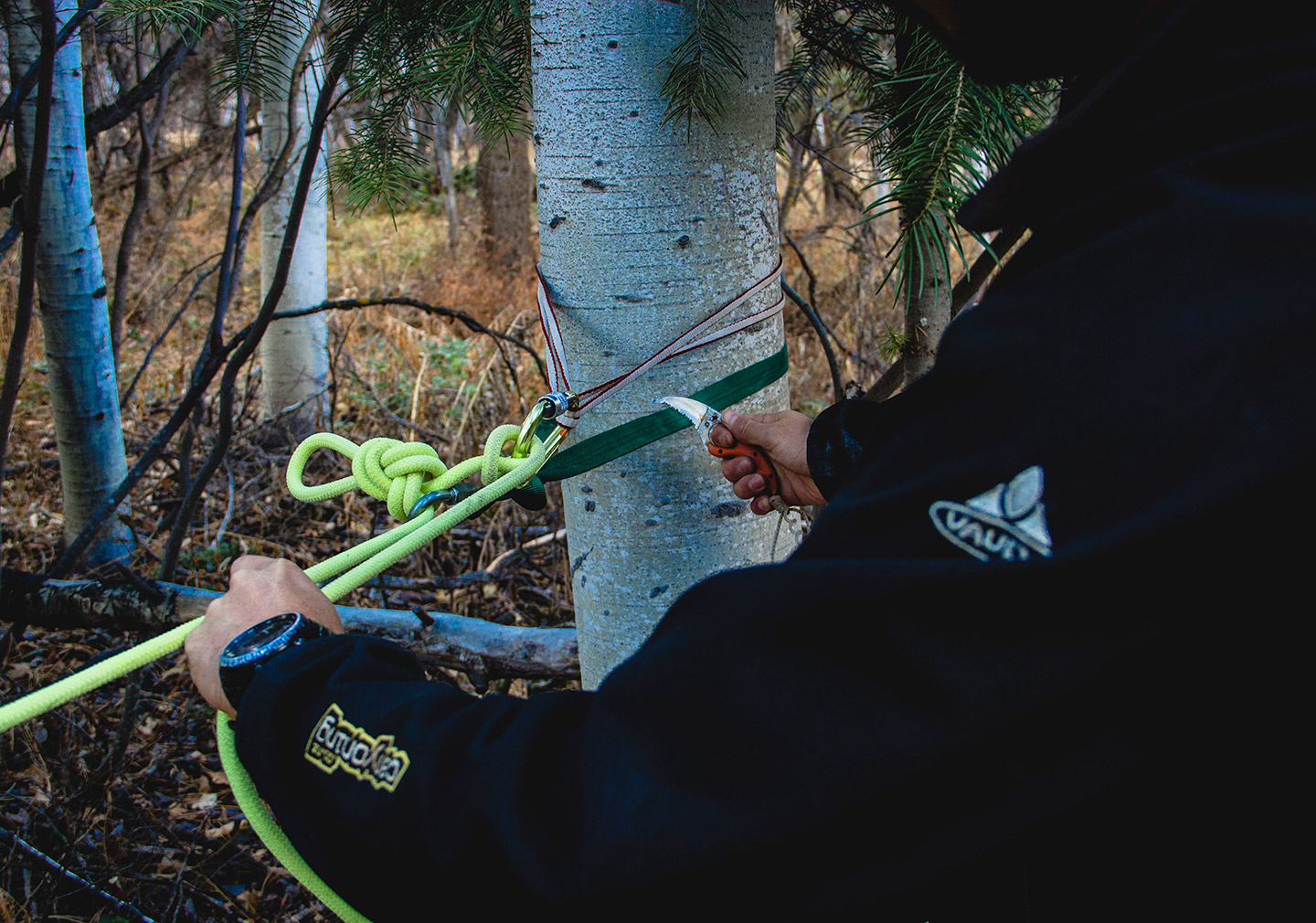
3Holding firmly the brake strand of the Munter hitch in its maximum breaking direction, with the other hand we remove our knife and carefully cut the loop of webbing holding the quicklink.
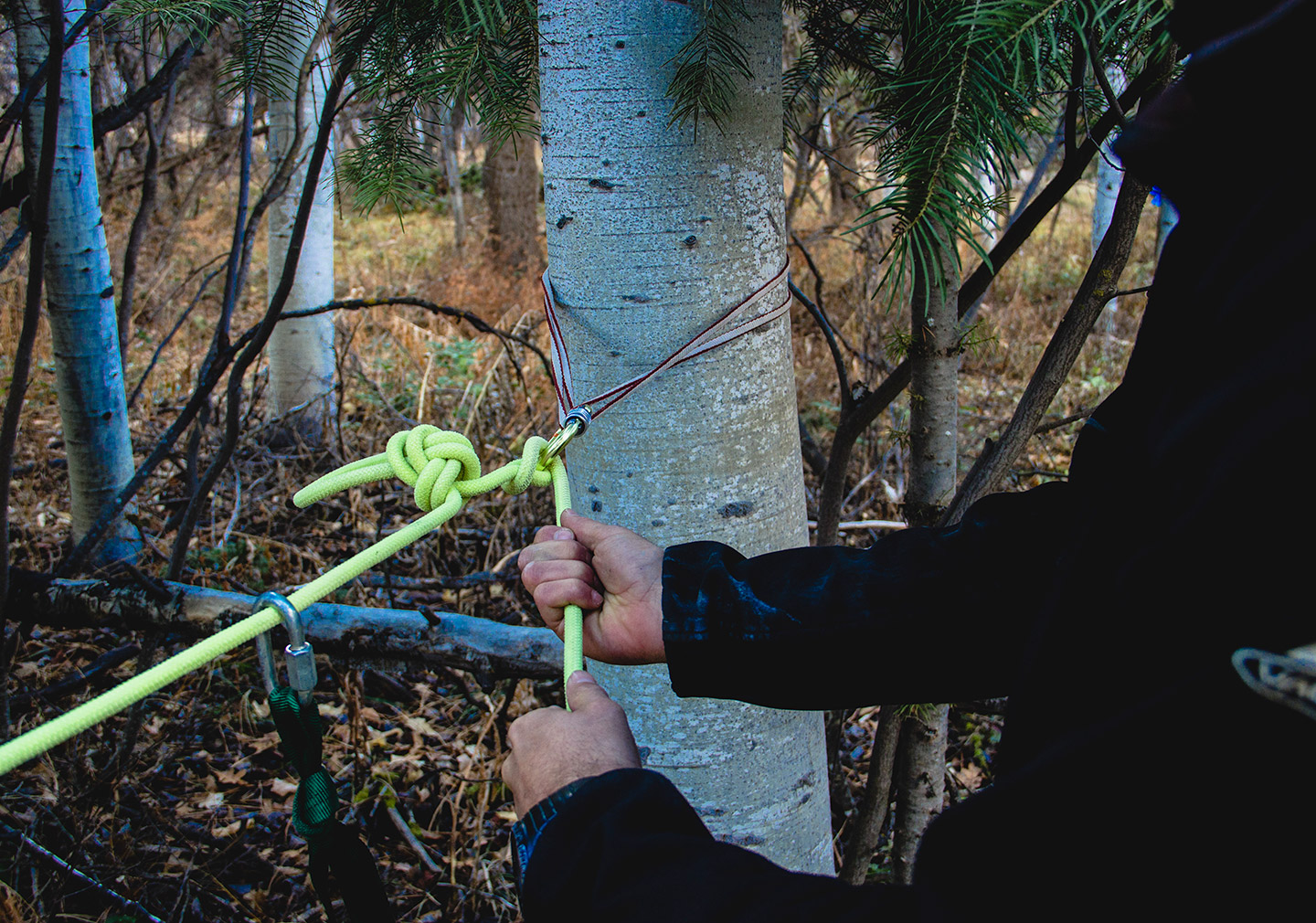
4Carefully putting away our knife, we lower our troubled teammate.
Scenario #4
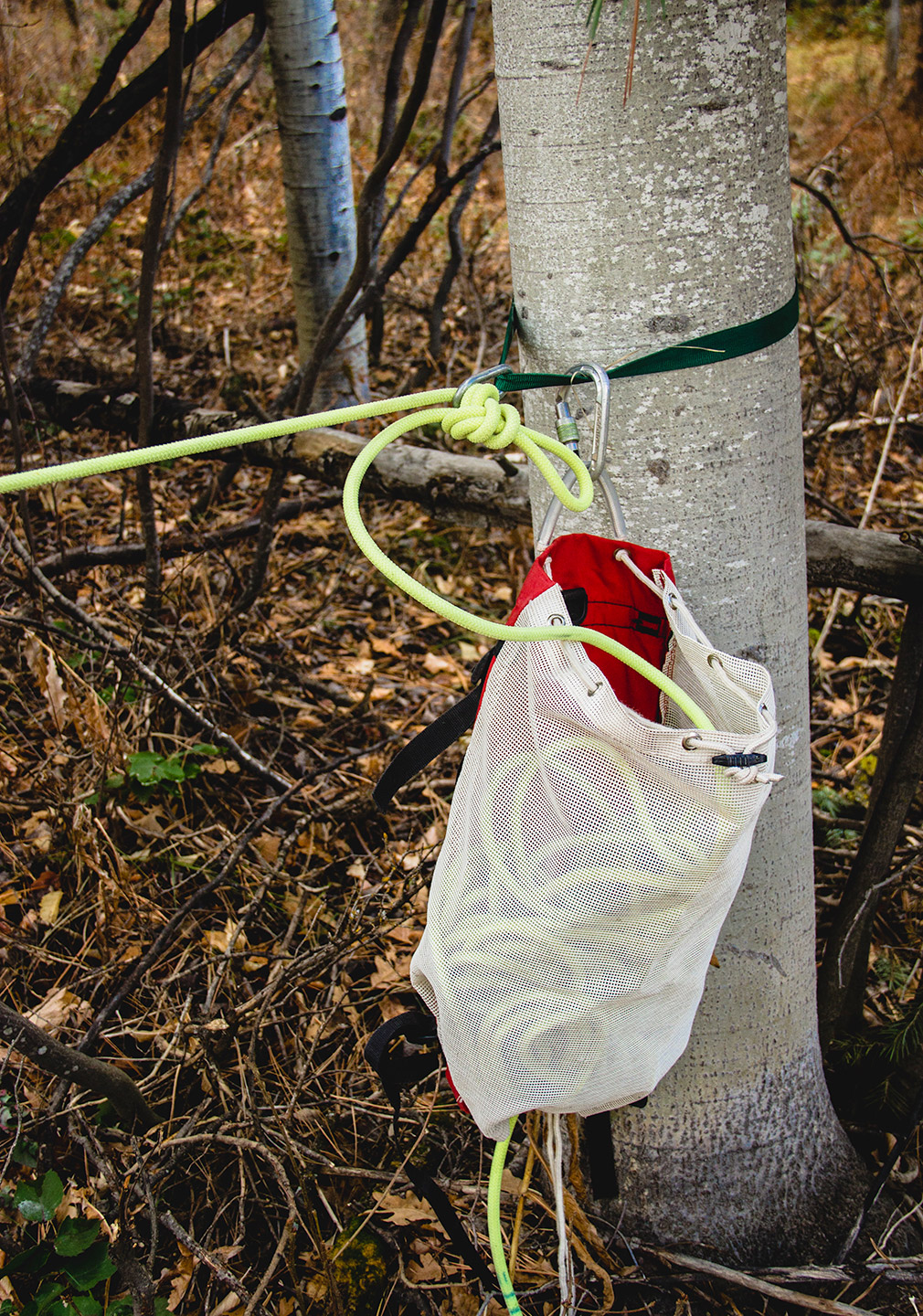
This is a variation of scenario #3. This technique only works with cylindrical anchors (trees) with a diameter greater than 15cm (6in). It is better if the tree is already dead, since this technique will possibly kill it. Again, we have tree anchor slung with a tied piece of webbing and finished with a quicklink.
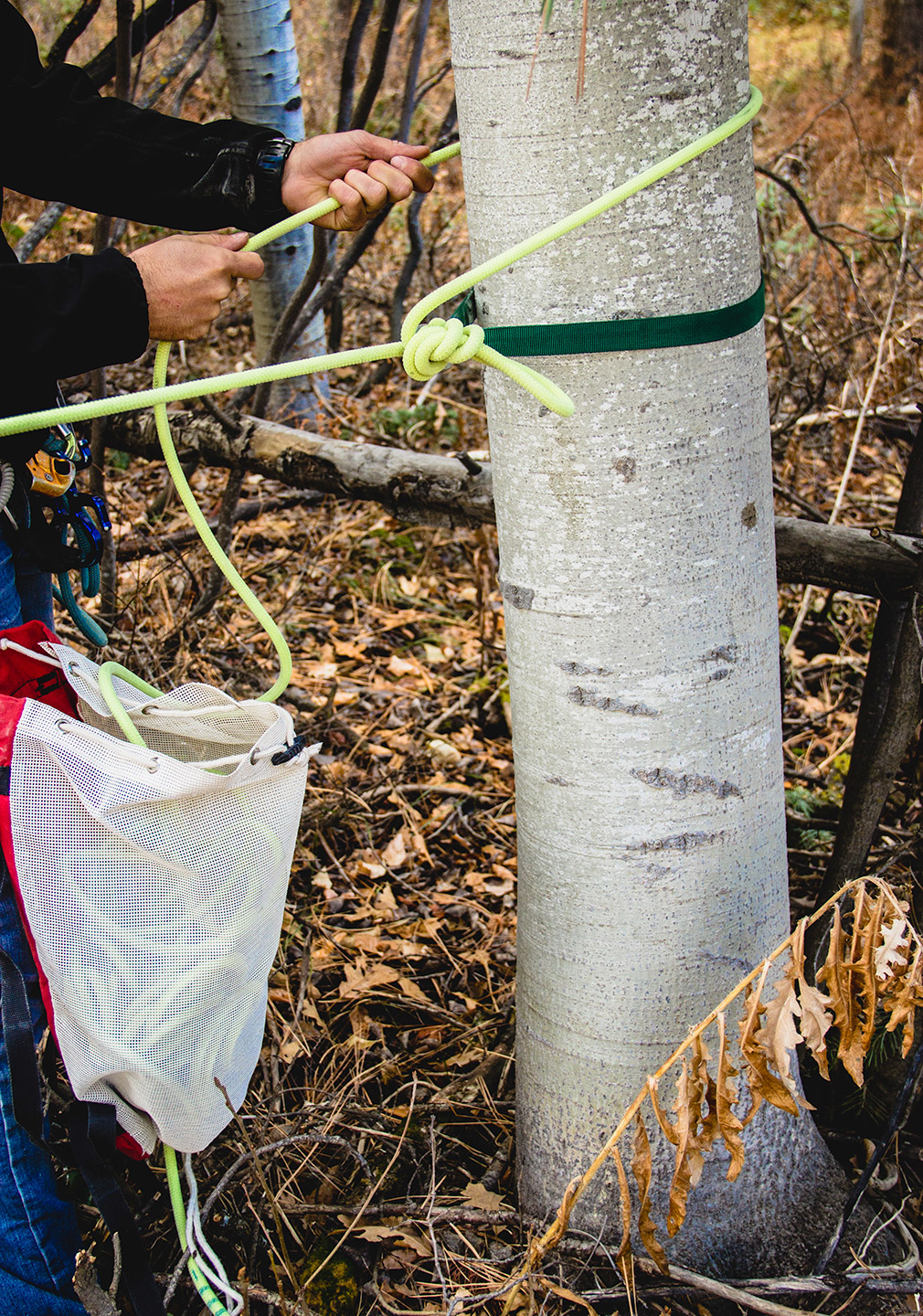
1We pass the rope bag around the tree, ensuring the deploying rope lays slightly above the webbing anchor.

2Taking the rope near the bag, we thread it through a standard figure-8 with a locking carabiner.
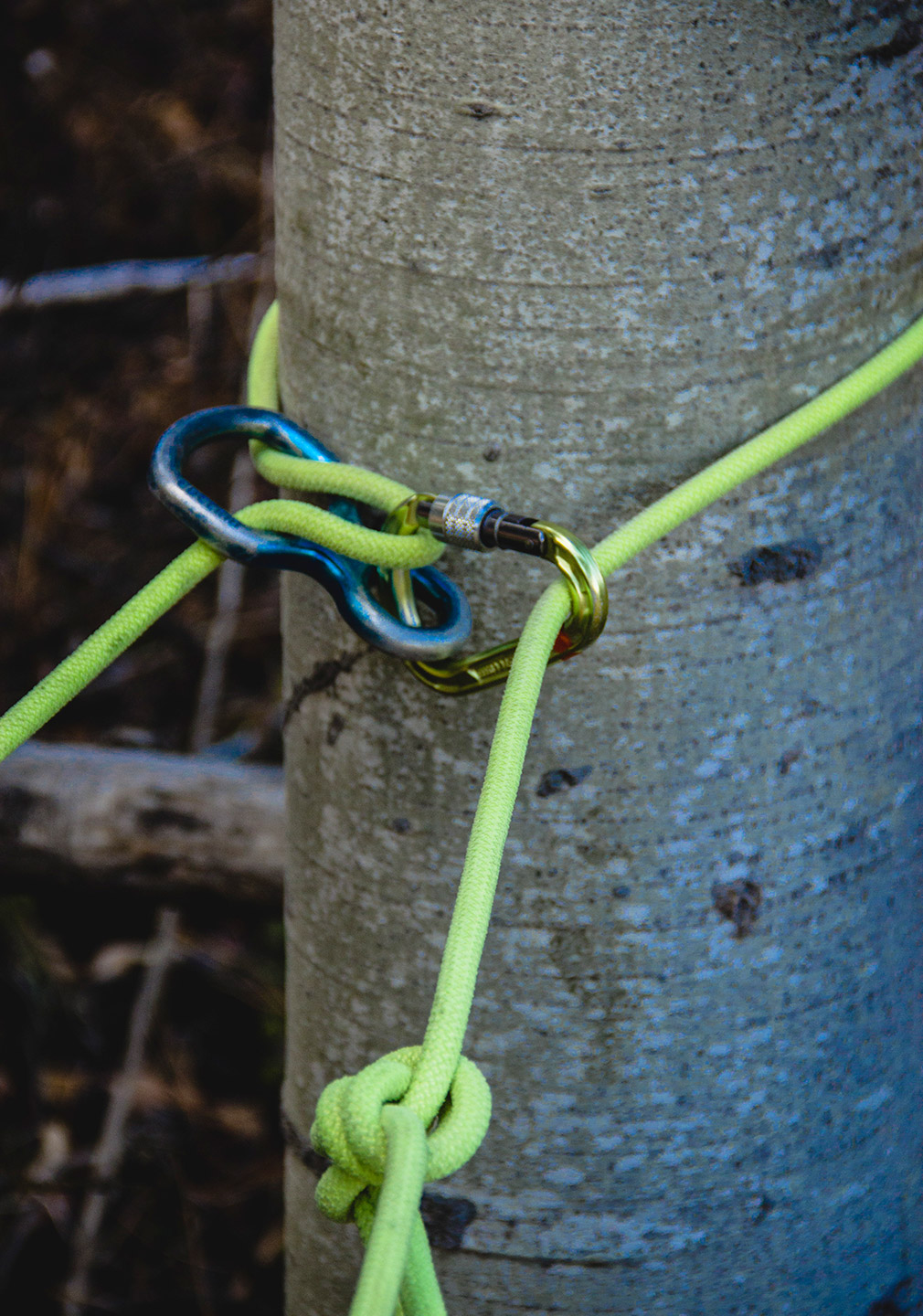
Note: You can thread the figure-8 in normal mode or sport/fast mode depending on the anticipated friction needed.
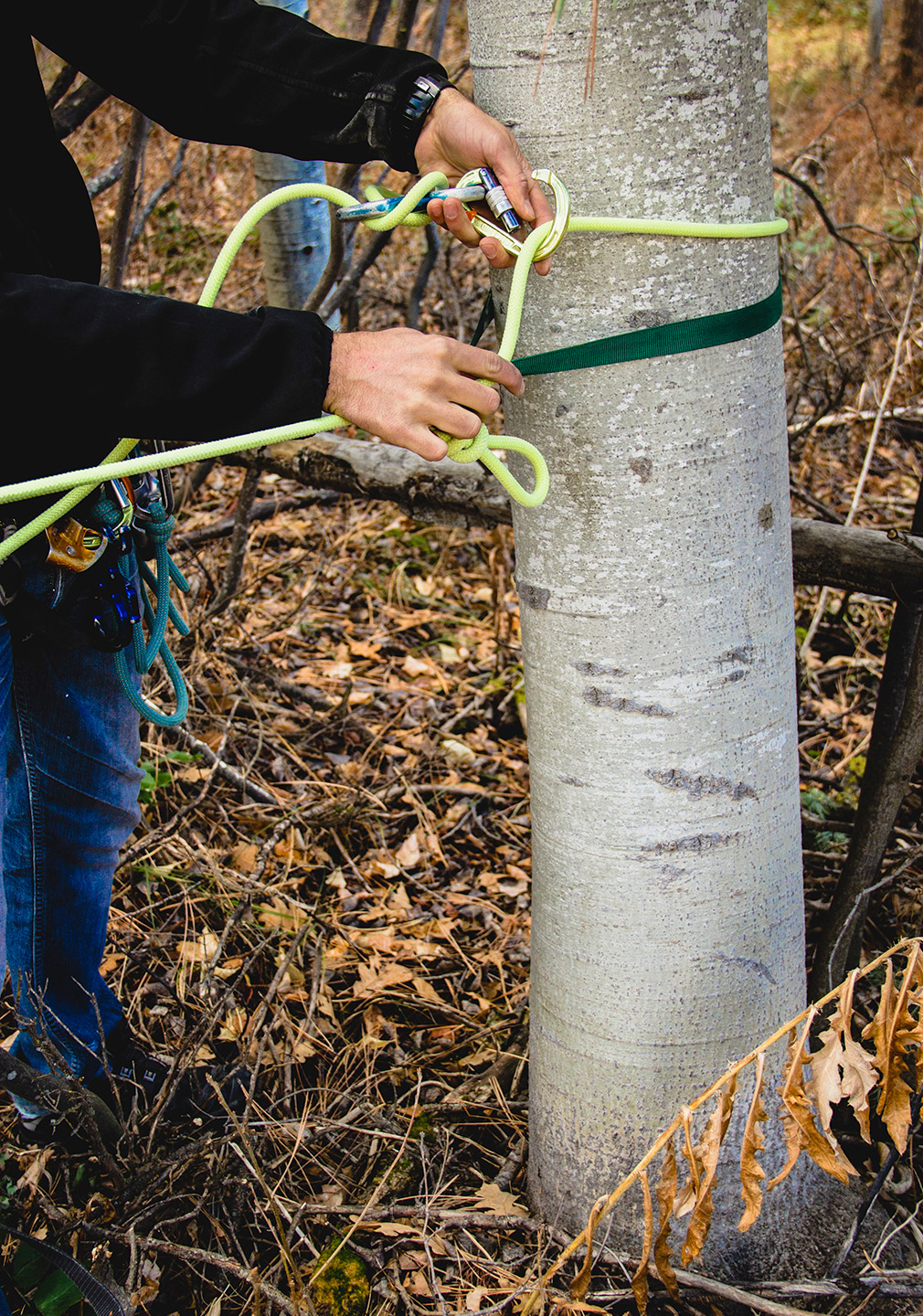
3We clip the locking carabiner to the rope strand on the other side of the tree, creating a loop.
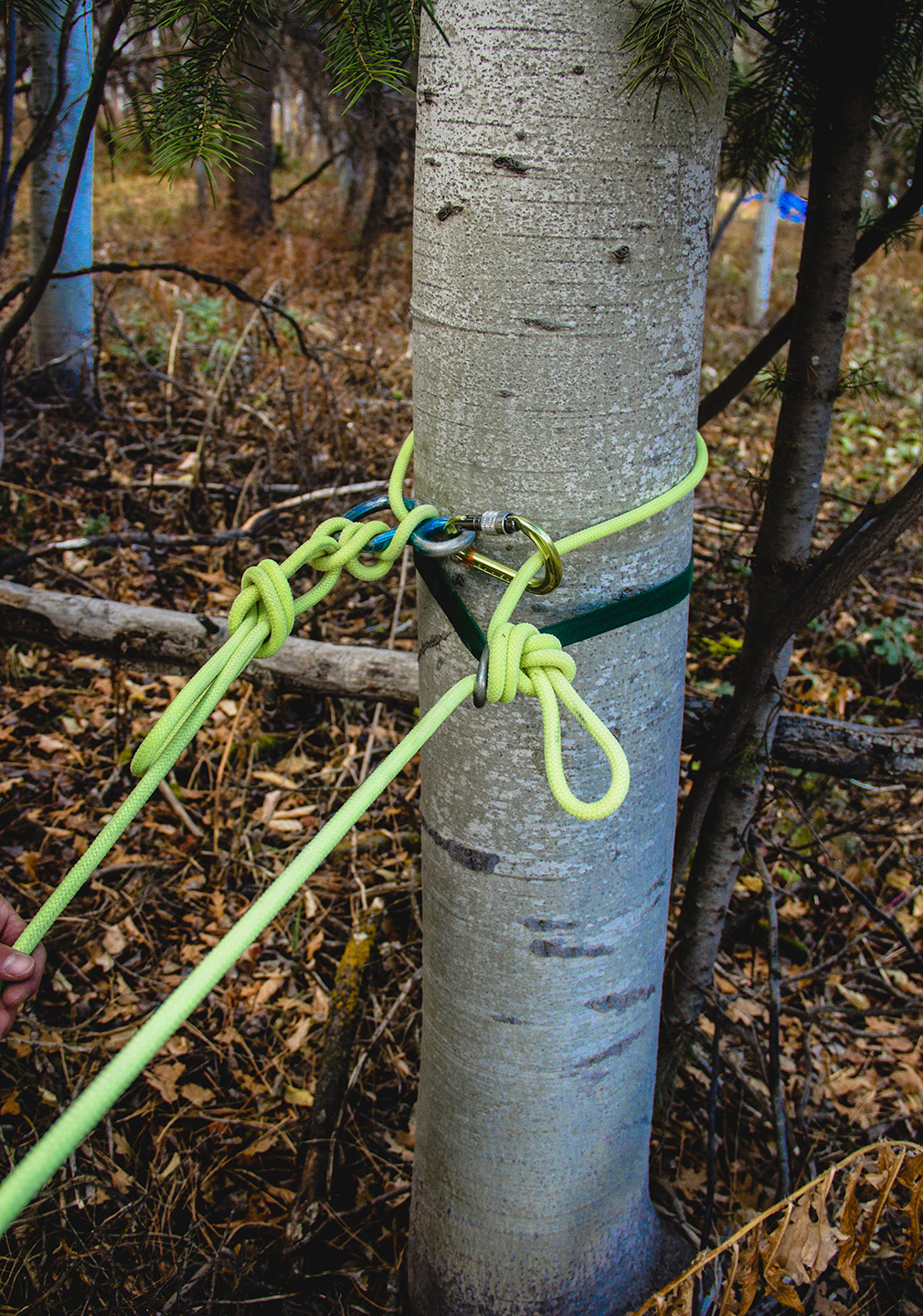
4We remove as much slack as possible, and we lock off the figure-8 with a mule-overhand.
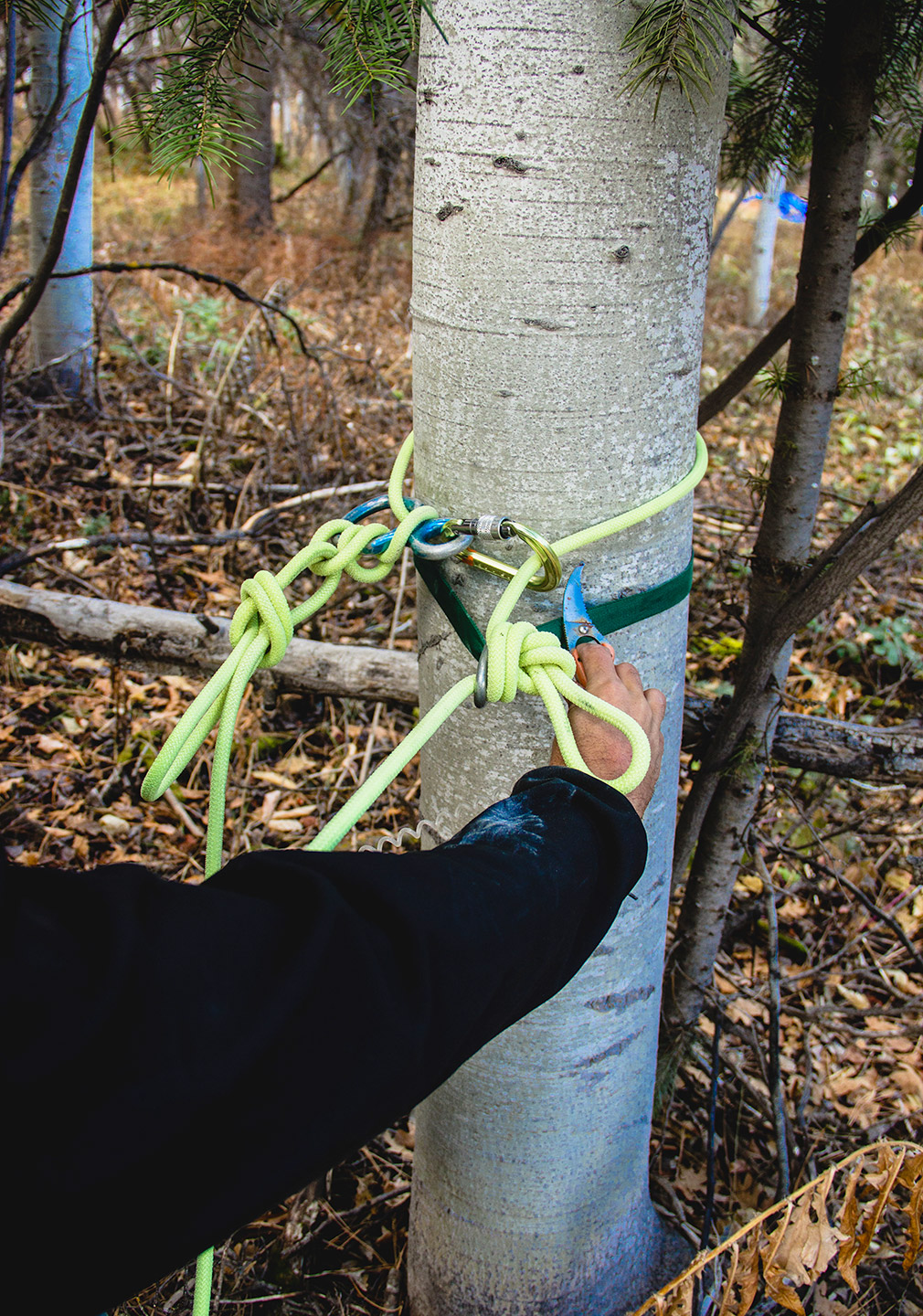
5We retrieve our knife, and we carefully cut the webbing near the quicklink.
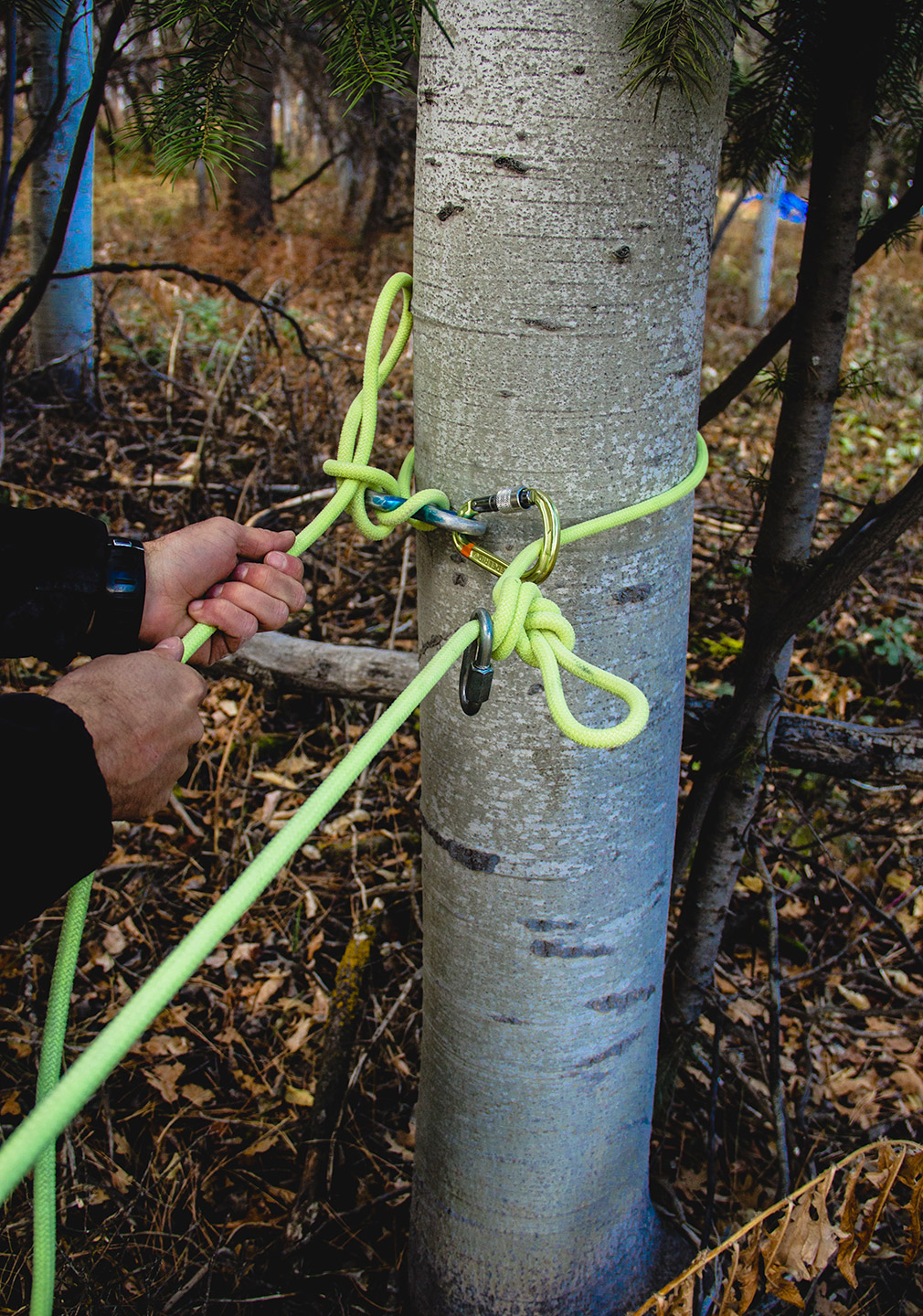
6We put away our knife, unlock the mule-overhand, and begin lowering our teammate off the figure-8.
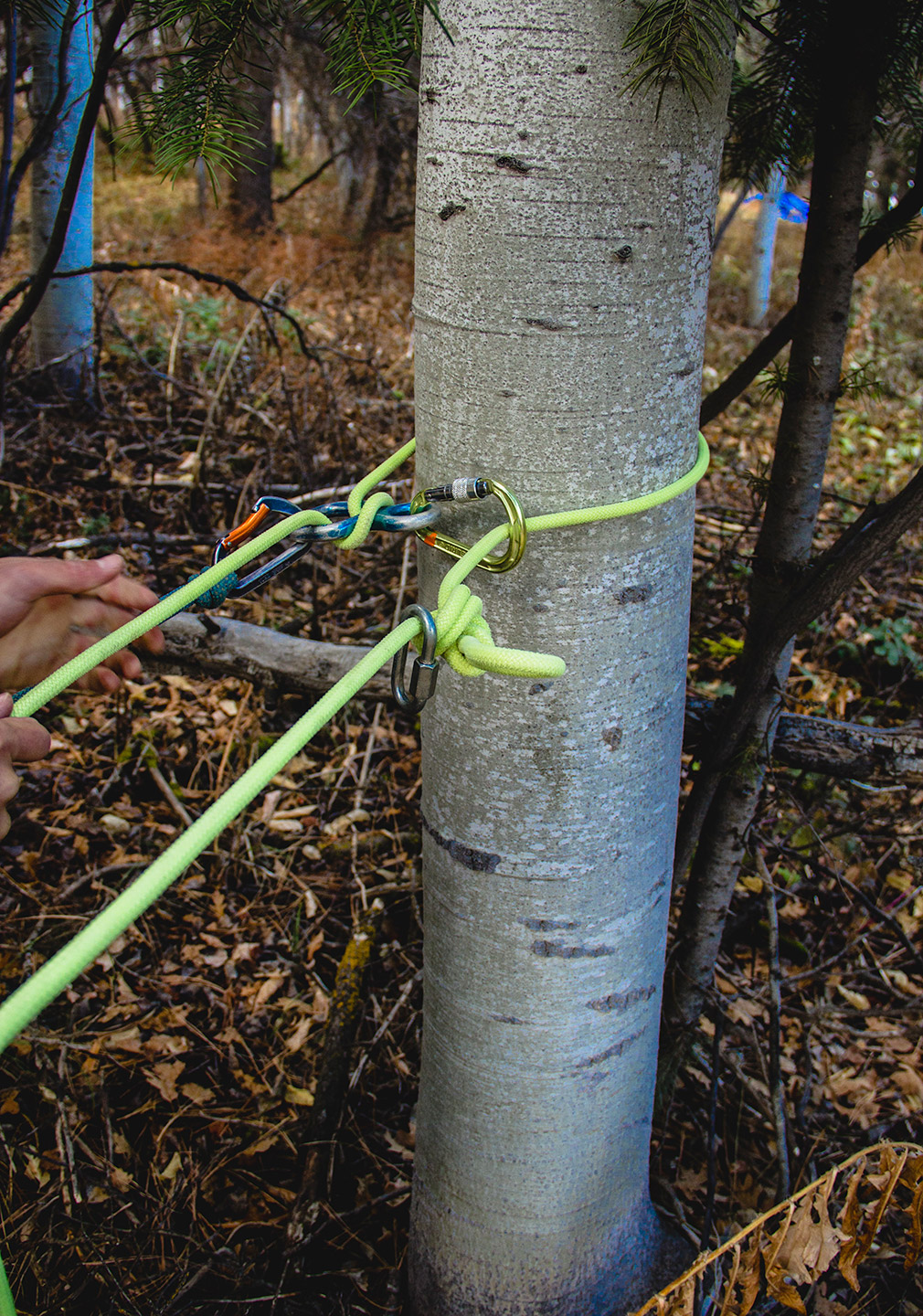
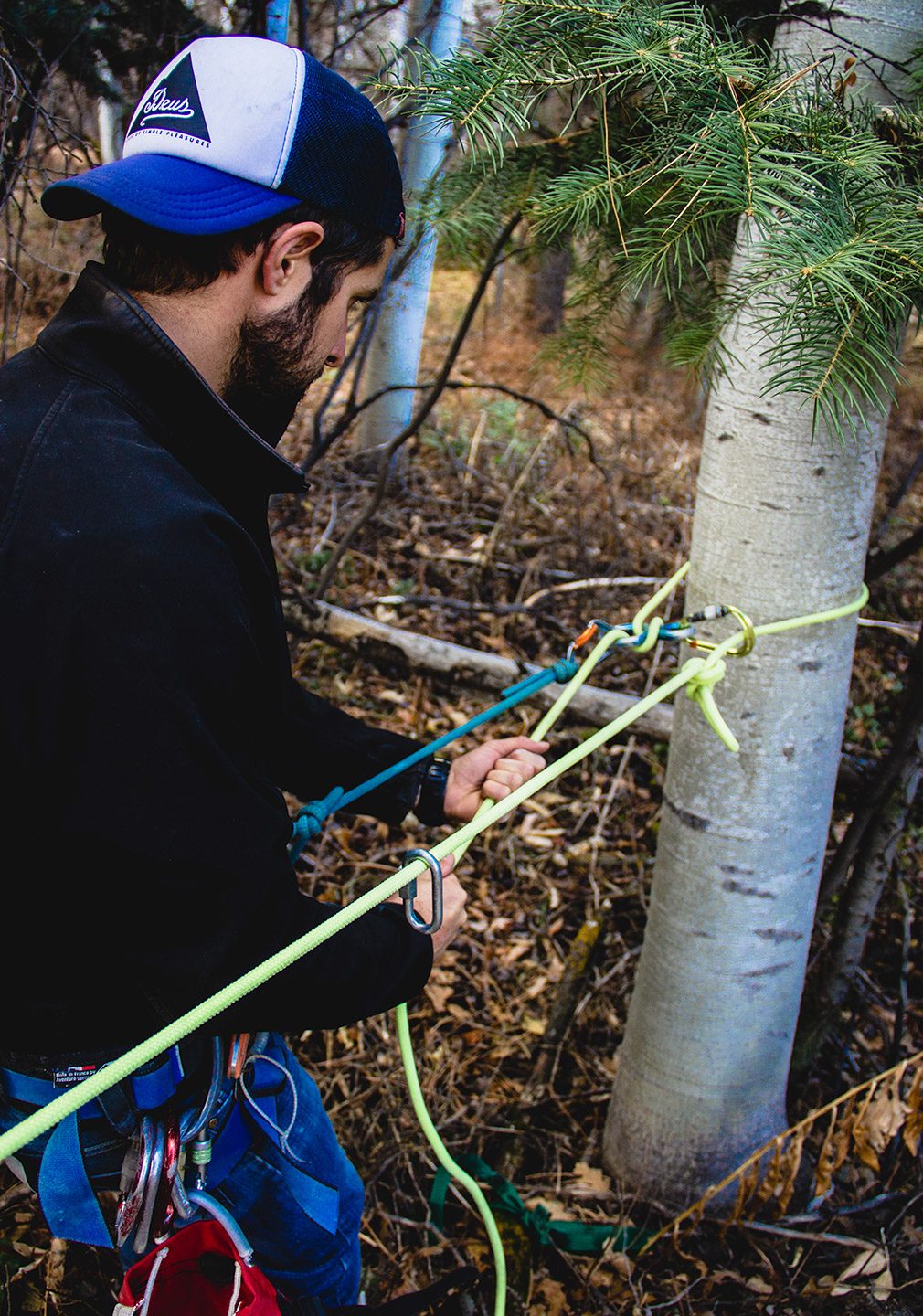
Note: If pinching occurs at the 8, it may be necessary to clip your short cowstail into the big hole of the 8 and gently pull it away from the tree while lowering.
